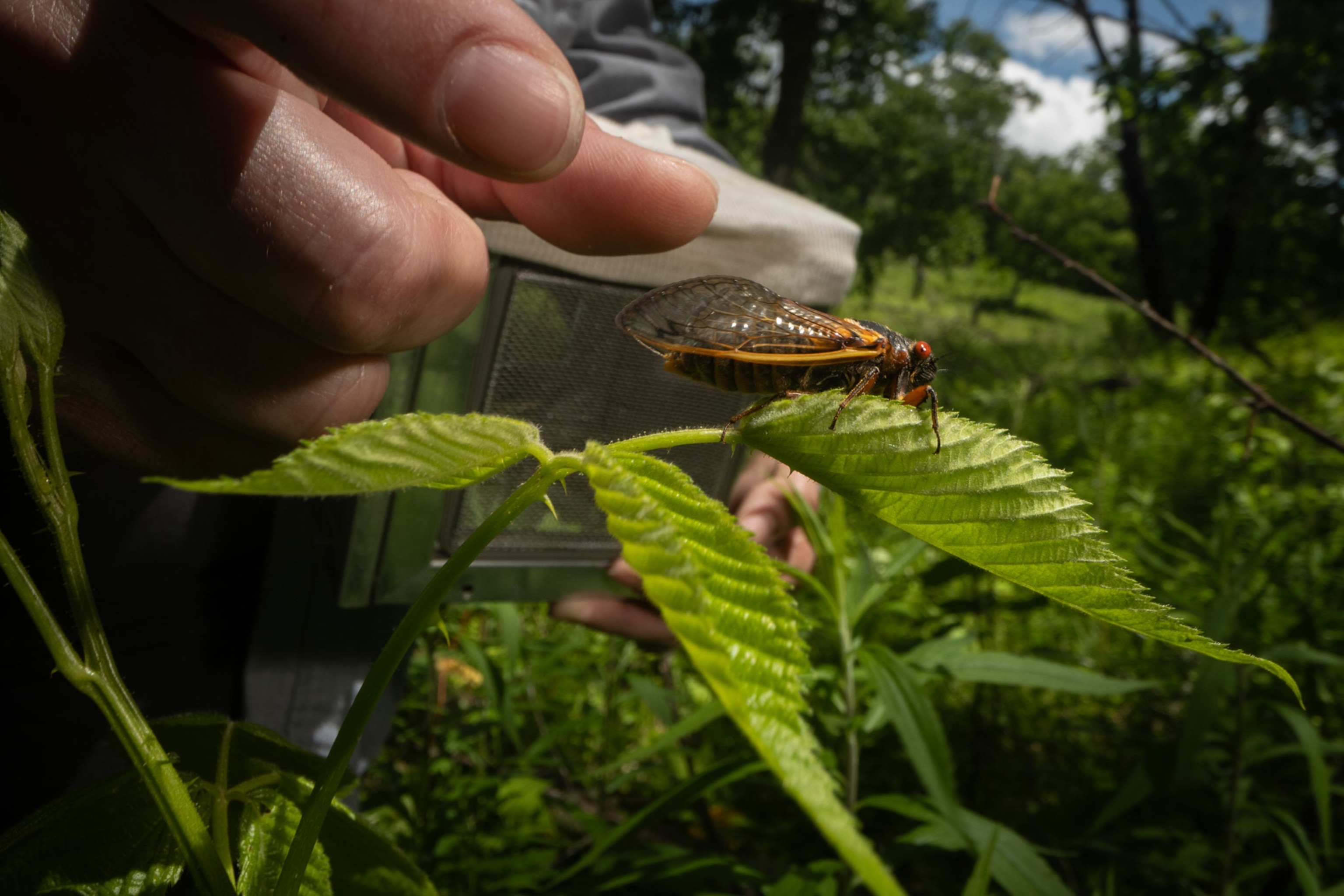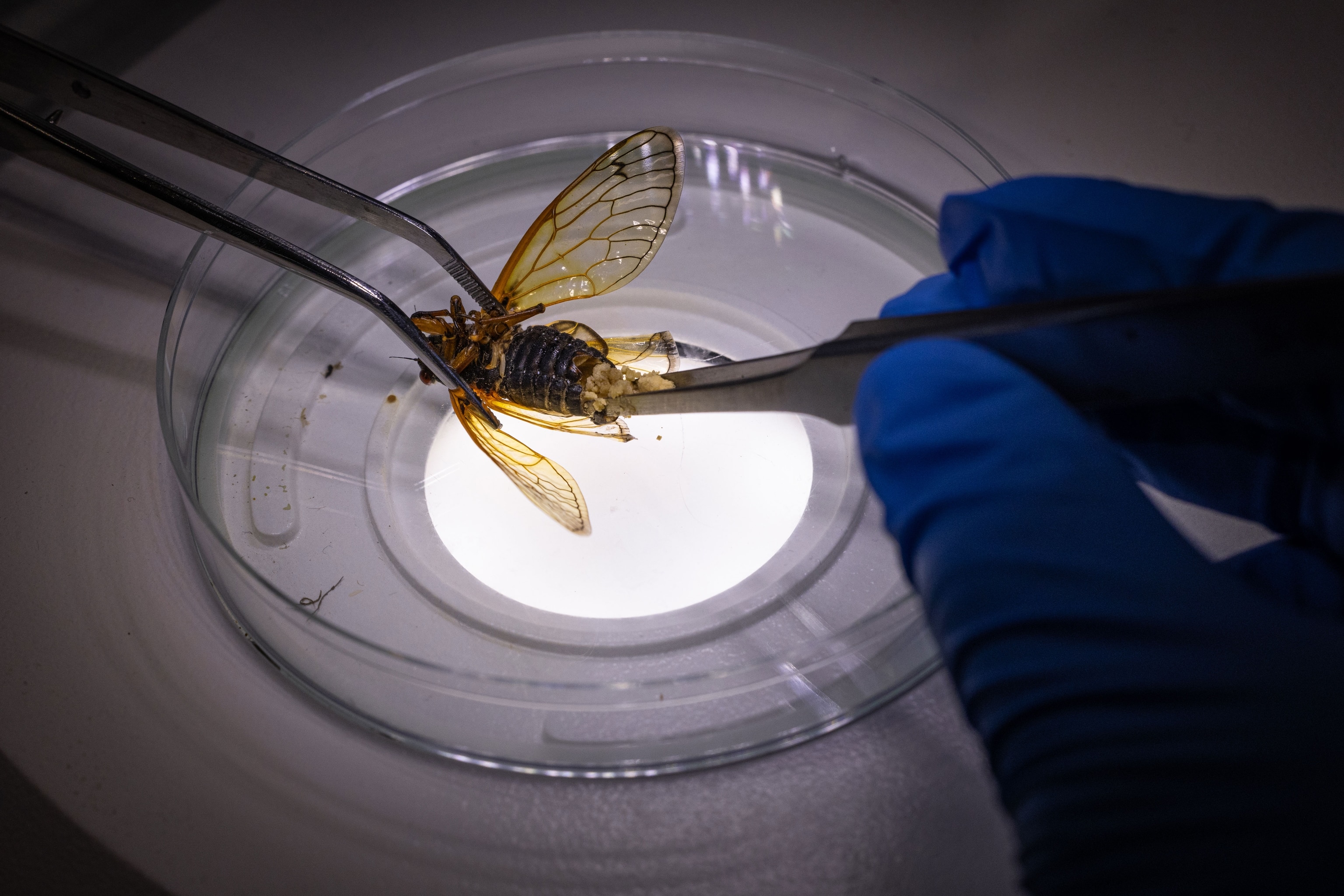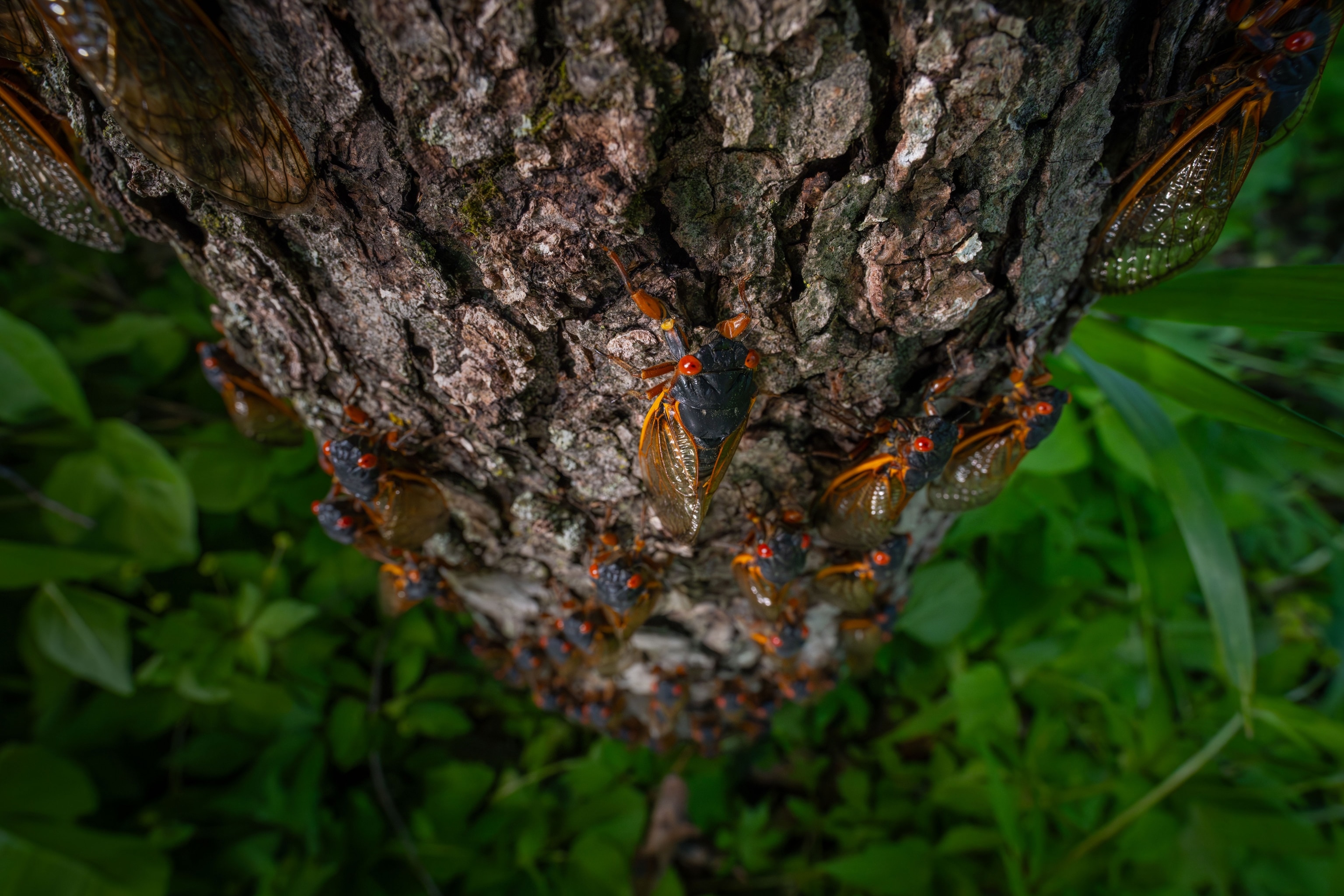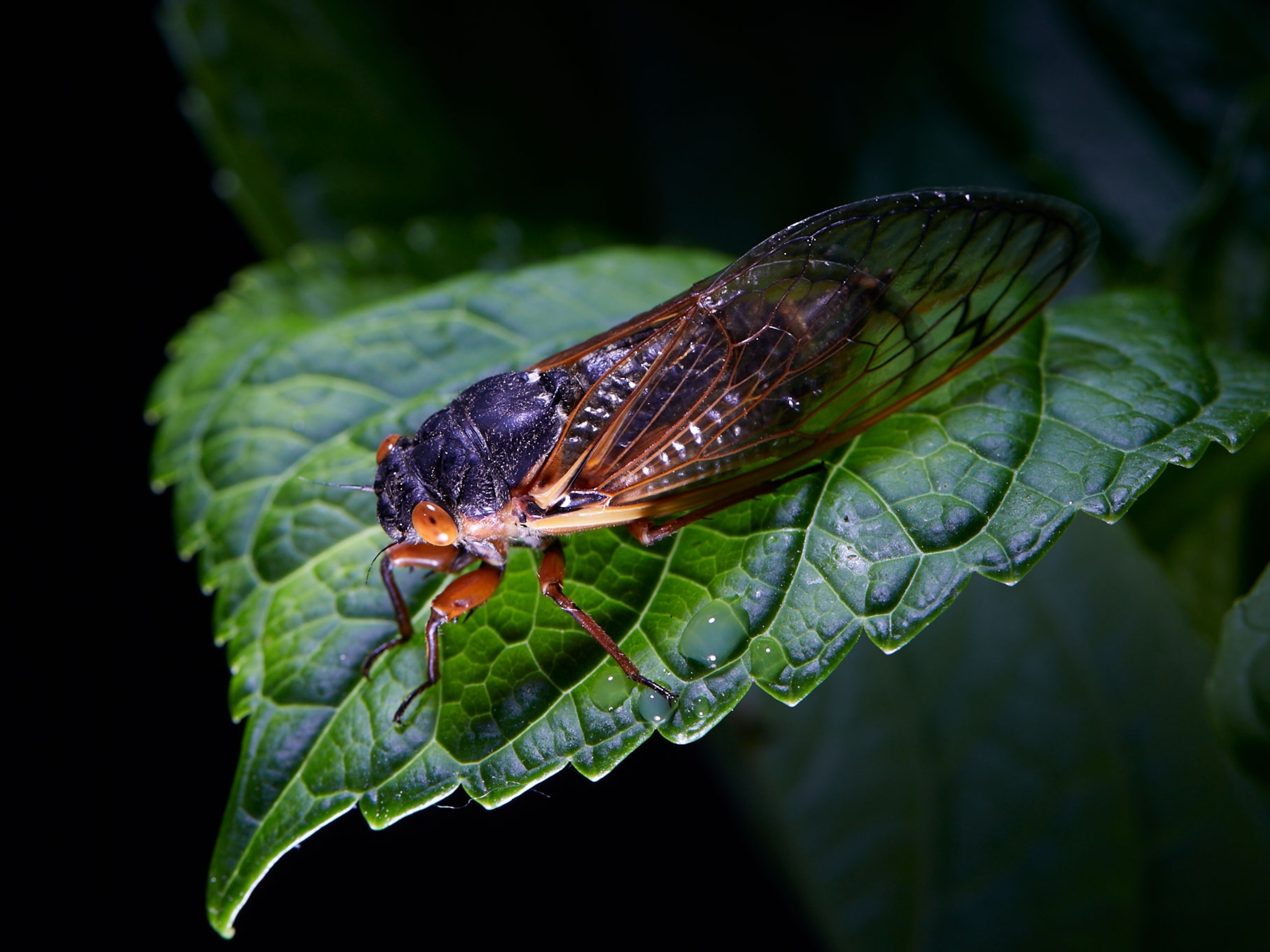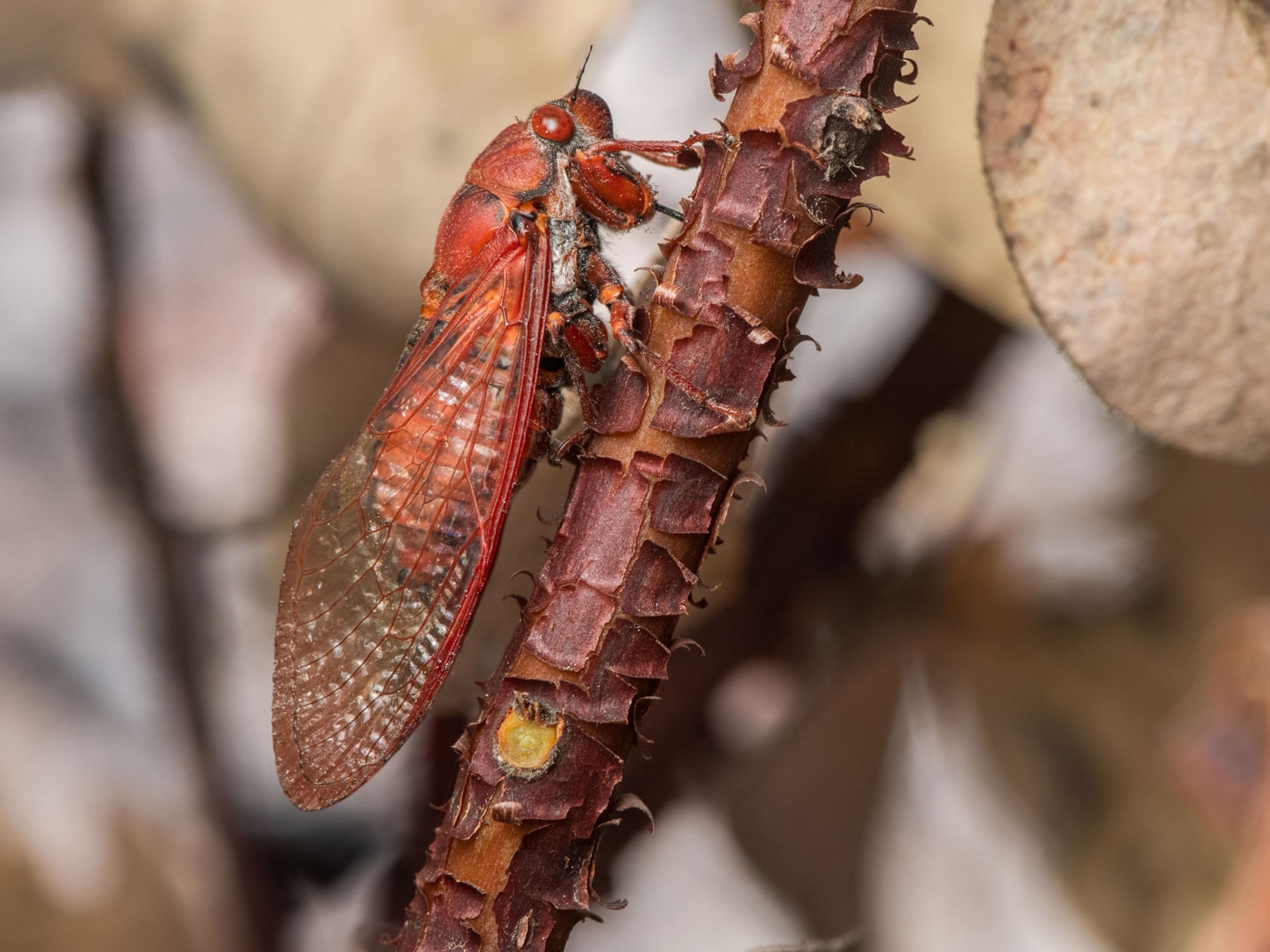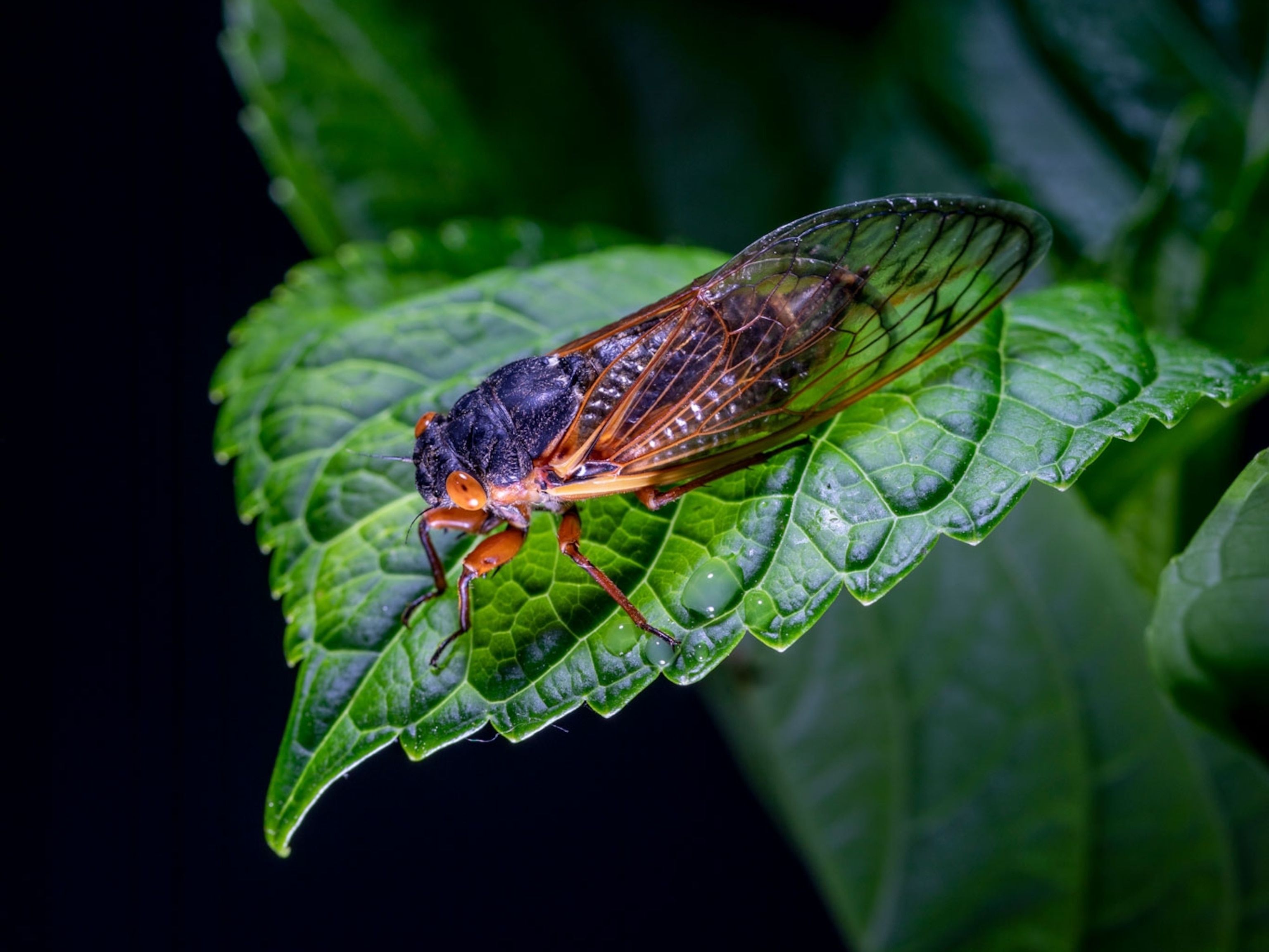
See how billions of cicadas are taking over the U.S. this summer
As much of the central U.S. is being blanketed by these buzzing insects, photographer Keith Ladzinski captures the strange and wondrous double emergence event that only occurs every 200 years.
There’s a deafening buzz in the air in parts of the United States: Billions of periodical cicadas have emerged after spending 13 or 17 years underground. Their one mission is to mate—and to find one another they emit buzzing and clicking sounds from their perches in the trees.
The noise can reach a hundred decibels, or “about the level of a jet engine,” according to Tamra Reall, an entomologist and horticulture field specialist at the University of Missouri who goes by “Dr. Bug.”
It’s not just loud. This year’s simultaneous emergence of two broods of periodical cicadas across the Midwest and Southeast is a rare occurrence that hasn't been seen in 221 years.
National Geographic photographer Keith Ladzinski spent a few days in central Illinois—where Brood XIII and Brood XIX overlap—documenting a spectacle unlike any other as the flying insects fill the air and shed their exoskeletons.
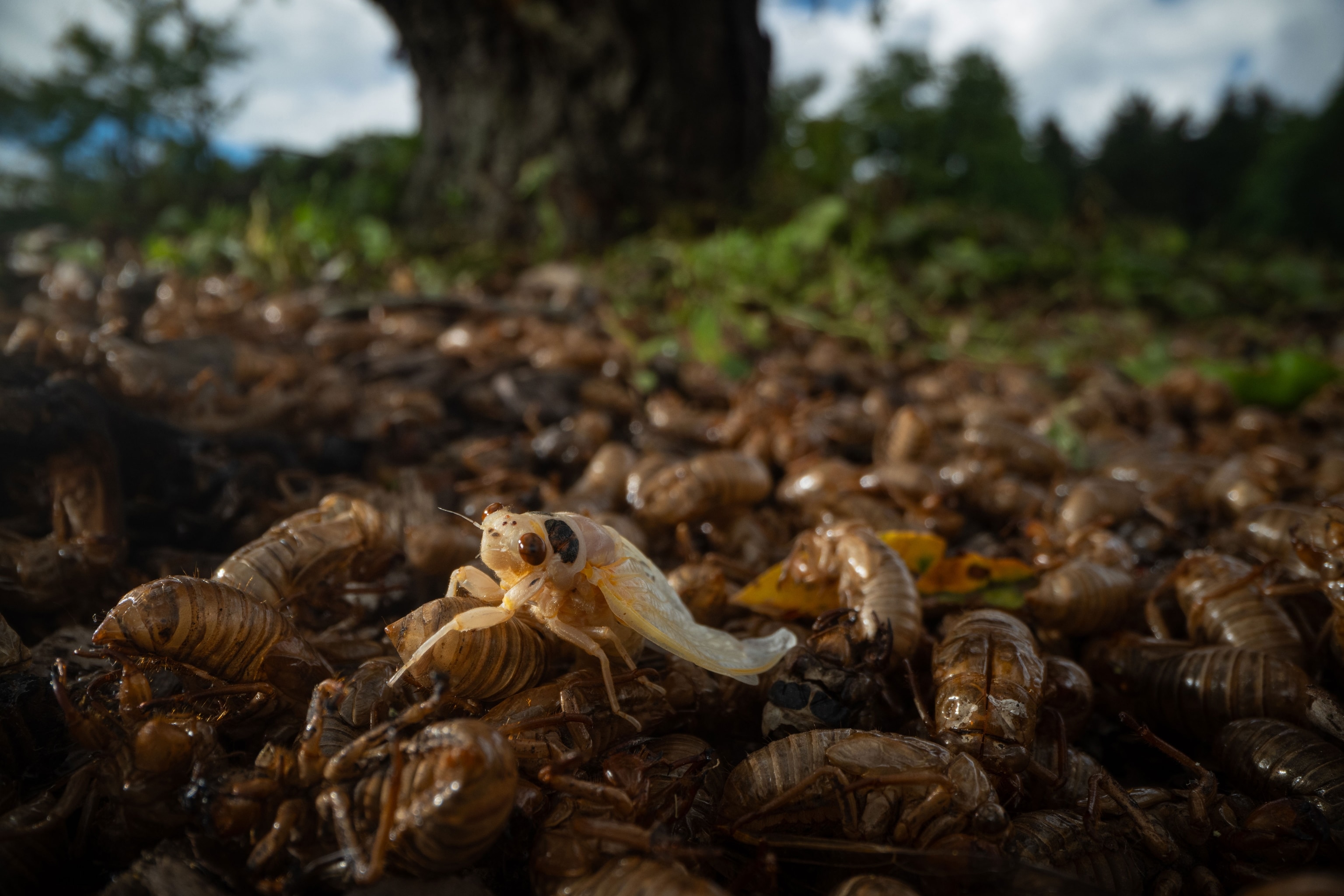
Ladzinski captured some amazing moments of the cicadas' strange life cycle, from the moment they molt into adults to cicadas up in the trees searching for mates. But how exactly does it all work—and what are the biggest threats cicadas face in their short lives? Here are some key cicada facts:
There are 15 recognized broods of U.S. periodical cicadas. This year is the first time since 1803—when the U.S. President Thomas Jefferson was still in office—that Brood XIII and Brood XIX emerged simultaneously. However, each of the broods has a distinct geographic range with little overlap between them.
They emerge as adults at the same time—and in regular intervals. Unlike annual cicadas, which come out every summer, periodical cicadas only emerge every 13 or 17 years. Experts tell us that they know when to do so by counting the seasonal pulses of fluid flowing in tree roots from which they feed underground, then wait until the soil gets to the right temperature—around 65°F (18°C)—to take to the skies.
For cicadas, there's safety in numbers. Periodical species haven’t evolved to develop evasive maneuvers quite like their annual cicada brethren, which know to quickly flee from predators like birds and moles. But their synchronized schedules boost their survival as their broods are so dense—as many as 1.5 million may crowd a single acre—that the risk to any individual periodical cicada approaches zero.
Annoyed by the sound? That's probably a male cicada. Most of a cicada's short adulthood is spent searching for a mate. Males issue the deafening vocalizations you hear with vibrating membranes on their abdomens while females male a clicking noise in return.
Some cicadas have a fungus that turns them into sex zombies. One threat awaits cicadas when they emerge from the ground: a parasitic fungus called Massospora that eats them from the inside out, takes over their bodies, and keeps them just alive enough to spread the disease to their mates during reproduction.
